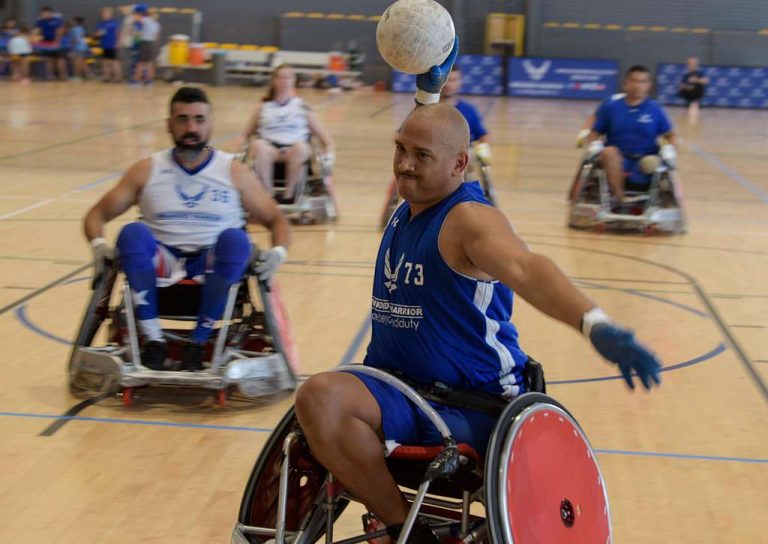General Rules of Roll Ball Sport
Imagine a game where precision and agility intertwine like a well-choreographed dance. As players glide across the court, strategically passing the ball and outmaneuvering their opponents, the rules of roll ball sport govern every move. From the composition of the team to the nuances of fouls and penalties, understanding the intricacies of this sport can truly elevate your gameplay. So, are you ready to unravel the secrets behind this unique and dynamic game?
Team Composition
When forming a team for Roll Ball, it is essential to contemplate the roles and positions each player will fulfill during the game. Player roles in Roll Ball are pivotal for the team's success. Strategic formations play a significant role in determining the flow and outcome of the game. As a player, understanding your role within the team and executing it effectively is important for achieving victory.
The team captain holds significant responsibilities in Roll Ball. Apart from leading the team on the court, the captain is also responsible for making important decisions during the game. Communication skills are paramount for a team captain. Effective communication ensures that strategies are well understood and executed by all team members. A captain with strong communication skills can motivate the team, boost morale, and foster a sense of unity among players.
When considering team composition, it is important to assign players to positions that align with their strengths. Each player brings unique skills to the team, and a good coach will capitalize on these strengths when forming the lineup. By strategically placing players in positions where they can excel, the team can maximize its performance on the court.
Court Dimensions
When it comes to the court dimensions in roll ball sport, you'll need to pay attention to the court size requirements, boundary line specifications, and goalpost positioning. Understanding these points is important for ensuring fair play and adherence to the rules of the game. Proper court dimensions play an important role in the overall gameplay experience for both teams.
Court Size Requirements
To properly set up a roll ball court, it is essential to adhere to specific court size requirements, also known as court dimensions. The court size requirements are vital for ensuring a fair and standardized playing field for all participants. Here are some key points to consider:
- Court dimensions vary based on the level of play, with international competitions requiring a larger court size.
- The standard court size for official matches is 28 meters in length and 15 meters in width.
- The court is divided into two halves, each with a goal post at the center of the backline.
- Proper court markings, including the centerline and goal crease, must be clearly visible for accurate gameplay.
Ensuring the correct court size requirements are met will contribute to a smooth and enjoyable roll ball experience.
Boundary Line Specifications
Adhering to specific boundary line specifications is essential in ensuring the proper court dimensions for a roll ball court setup. Player safety is paramount in the design of these boundaries. The court's outermost lines should be clearly marked to prevent any potential accidents or collisions during gameplay. It's vital to follow equipment regulations to maintain a fair and safe playing environment. The boundary lines serve as a guide for players to understand the limits of the court and prevent any foul play or disputes during matches. By adhering to these specifications, players can focus on honing their skills and enjoying the game without worrying about their safety or the fairness of the game. Remember, respecting these boundaries is key to a successful roll ball match.
Goalpost Positioning
For proper court dimensions in roll ball sport, understanding the positioning of the goalposts is essential. The goalposts must be placed precisely to guarantee a fair and competitive game. Here are some key points to keep in mind:
- Goalpost Placement: The goalposts should be equidistant from each other to maintain fairness.
- Distance from Sidelines: The goalposts should be a certain distance away from the sidelines to prevent obstruction during gameplay.
- Height of Goalposts: The height of the goalposts should adhere to standard regulations for consistency.
- Visibility: Make sure that the goalposts are easily visible to all players on the court to avoid confusion during player rotations and defensive strategies.
Understanding the correct goalpost positioning is critical for successful offensive formations and fast breaks.
Game Duration
When it comes to the duration of a roll ball game, several key points need to be considered. You must be aware of the time limit set for each match, the rules governing halftime breaks, and the procedures for overtime play. Understanding these aspects will help you navigate the game's timing effectively.
Time Limit
When engaging in the roll ball sport, the designated time limit for a game serves to maintain the pace and excitement of the match. Here are some key aspects related to time limits in roll ball:
- Referee decisions: Referees play an important role in making sure that the game progresses within the stipulated time frame.
- Player substitutions: Efficient substitutions help keep the game flowing smoothly without unnecessary delays.
- Clock management: Proper timekeeping is essential to guarantee fairness and adherence to the game duration.
- Strategic timeouts: Teams often utilize timeouts strategically to regroup, plan tactics, or break the momentum of the opposing team.
Understanding these factors can enhance your experience of roll ball by making sure that matches are engaging and well-paced.
Halftime Break
During a roll ball match, the halftime break marks a pivotal moment for players to rest and strategize for the remainder of the game. This break also allows for player substitutions, giving teams the opportunity to adjust their tactics and bring in fresh legs for the second half. While some players may take advantage of snack breaks during this time, others might enjoy watching cheerleading routines or other halftime entertainment. The break typically lasts for a few minutes, providing a brief interlude before the significance of the game resumes. It's important for teams to make the most of this time to regroup and refocus, ensuring they are ready to give their best performance in the upcoming half.
| Halftime Break Activities | Description |
|---|---|
| Player substitutions | Adjusting tactics |
| Cheerleading routines | Entertainment for fans |
| Snack breaks | Quick refueling options |
Overtime Rules
For an exciting and fair conclusion to roll ball matches that extend beyond regulation time, the sport employs overtime rules to determine the final outcome based on additional gameplay. Overtime strategies are important in this phase as player fatigue starts to become a significant factor. Referee decisions play a key role in ensuring a smooth change into overtime and maintaining fairness throughout. In the event of a tie during overtime, sudden death rules may come into play to determine a clear winner. It is essential for teams to remain focused and adaptable during overtime periods, as the intensity of the game often increases, and quick thinking becomes paramount to secure victory.
Scoring System
In Roll Ball, players earn points by successfully rolling the ball into the opposing team's goal. Various scoring techniques and player strategies come into play during a match. Players often utilize quick and accurate passes to outmaneuver the opposing team's defense, creating scoring opportunities. Additionally, players can employ deceptive moves and feints to confuse defenders and create openings to score.
Goalpost positioning is important in the scoring system of Roll Ball. Teams must strategically place their players near the opponent's goalpost to increase their chances of scoring. By having players in best positions, teams can execute quick passes and shots to catch the opposing team off guard and secure a point.
Defensive tactics also play a significant role in the scoring system. Teams need to have a strong defensive line to prevent the opposing team from scoring. Effective defensive strategies include marking opposing players closely, intercepting passes, and blocking shots on goal. By maintaining a solid defense, teams can limit the number of goals scored against them and increase their chances of winning.
In Roll Ball, scoring is not just about individual skill but also about teamwork, strategy, and positioning. By mastering scoring techniques, player strategies, goalpost positioning, and defensive tactics, teams can maximize their scoring potential and secure victory on the court.
Ball Possession
Players in Roll Ball aim to maintain control of the ball through strategic passing and movement, dictating the flow of the game and creating scoring opportunities. Ball possession is an important aspect of the game that can determine the outcome of matches. Here are some key points to think about regarding ball possession:
- Defensive strategies play an essential role in maintaining possession. Teams often employ tactics such as pressing high up the court, intercepting passes, and blocking shooting lanes to regain control of the ball.
- Offensive tactics are equally important in ball possession. Players use quick passes, dribbling skills, and positional awareness to keep the ball away from opponents and create openings for scoring.
- Communication among teammates is essential for effective ball possession. Clear signals, verbal cues, and understanding each other's movements help in maintaining possession and launching successful attacks.
- Adaptability is key when it comes to ball possession. Teams must be flexible in their approach, adjusting their strategies based on the opponent's tactics and the flow of the game.
Fouls and Penalties
Within the domain of Roll Ball sport, understanding the fouls and penalties is essential for maintaining fair play and sportsmanship. Player behavior plays a critical role in determining fouls and penalties in Roll Ball. Engaging in actions such as pushing, tripping opponents, or using excessive force to gain possession of the ball are considered fouls. These behaviors not only violate the rules of the game but also jeopardize the safety of players on the court. Referees are tasked with monitoring player behavior closely to guarantee a level playing field for all participants.
Referee decisions hold significant weight in Roll Ball matches when it comes to fouls and penalties. Referees have the authority to penalize players who commit fouls by awarding free throws or penalty shots to the opposing team. Consistent enforcement of rules by referees is critical to maintaining the integrity of the game. Players must respect the decisions made by the referees, even if they may disagree with them. Challenging or arguing with referee decisions can result in further penalties, such as yellow or red cards, which can lead to a player's dismissal from the game. Upholding sportsmanship and fair play is essential in Roll Ball, and accepting the authority of the referees is a fundamental aspect of the sport.
Frequently Asked Questions
Can Players Switch Teams During a Game in Roll Ball Sport?
In roll ball sport, players cannot switch teams during a game. This rule fosters team loyalty and enhances game strategy. By maintaining player dynamics and upholding sportsmanship, the spirit of competition and camaraderie is preserved.
Are There Any Restrictions on the Type of Shoes Players Can Wear While Playing Roll Ball?
Like a key to a lock, your shoes in roll ball must fit snugly. There are restrictions on the type of shoes players wear. This confirms safety and provides performance benefits, but player preferences also play a role.
Is There a Specific Age Limit for Participating in Roll Ball Sport?
In roll ball sport, age restrictions exist based on skill levels. Player eligibility is determined by age categories to guarantee fair team dynamics. These guidelines promote competitive yet inclusive participation, enhancing the sport's integrity.
Are There Any Specific Regulations Regarding the Size and Weight of the Roll Ball Used in the Game?
When choosing a roll ball, make sure it meets regulations for material and shape. Weight standards are important for fair play. The ball's material dictates its durability, while its shape impacts gameplay greatly.
Can Players Use Their Hands to Block or Intercept the Ball in Roll Ball Sport?
Yes, players can use their hands to block and intercept the ball in roll ball sport. This defensive strategy allows for effective ball possession and enhances player techniques during the game, contributing to a dynamic gameplay experience.






